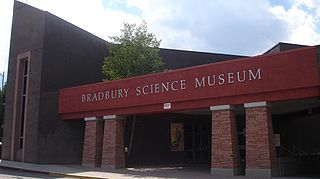 W
WThe Bradbury Science Museum is the chief public facility of Los Alamos National Laboratory, located at 1350 Central Avenue in Los Alamos, New Mexico, in the United States. It was founded in 1953, and was named for the Laboratory's second director (1945-1970), Norris E. Bradbury. Among the museum's early exhibits, artifacts and documents from World War II Manhattan Project were displayed upon declassification. Other exhibits include full-size models of the Little Boy and Fat Man atomic bombs. Admission is free.
 W
WFort Stanton was a United States Army fort near Lincoln, New Mexico.
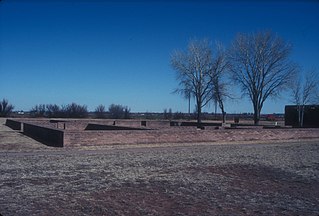 W
WFort Sumner was a military fort in New Mexico Territory charged with the internment of Navajo and Mescalero Apache populations from 1863 to 1868 at nearby Bosque Redondo.
 W
WFort Union National Monument is a unit of the National Park Service of the United States, and is located north of Watrous in Mora County, New Mexico. The national monument was founded on June 28, 1954.
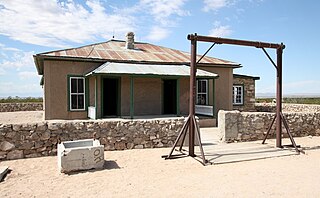 W
WThe McDonald Ranch House, also known as Trinity Site, in the Oscura Mountains of Socorro County, New Mexico, was the location of assembly of the world's first nuclear weapon. The active components of the Trinity test "gadget", a plutonium Fat Man-type bomb similar to that later dropped on Nagasaki, Japan, were assembled there on July 13, 1945. The completed bomb was winched up the test tower the following day and detonated on July 16, 1945 as the Trinity nuclear test.
 W
WThe National Museum of Nuclear Science & History is a national repository of nuclear science information chartered by the 102nd United States Congress under Public Law 102-190, and located in Albuquerque, New Mexico. "The mission of the National Atomic Museum is to serve as America's resource for nuclear history and science. The Museum presents exhibits and quality educational programs that convey the diversity of individuals and events that shape the historical and technical context of the nuclear age."
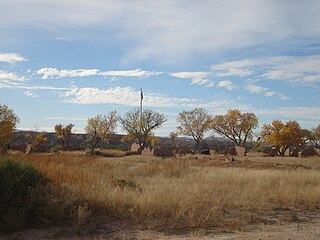 W
WFort Selden was a United States Army post, occupying the area in what is now Radium Springs, New Mexico. The site was long a campground along the El Camino Real de Tierra Adentro. It was the site of a Confederate Army camp in 1861. The U. S. Army established Fort Selden in 1865 for the purpose of protecting westward settlers from Native American raids, the post fell into disrepair after the American Civil War. It was ultimately abandoned in 1891, due in large part to the decision to expand Fort Bliss and the lack of any expenditures for repair of the facility.
 W
WVietnam Veterans Memorial is a memorial established in honor of Vietnam War veterans, near United States Highway 64 in Angel Fire, New Mexico.
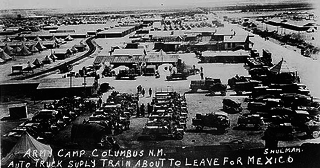 W
WThe Village of Columbus and Camp Furlong is a National Historic Landmark District commemorating the 1916 raid by Pancho Villa on the town of Columbus, New Mexico, and the American military response to that raid, the "Punitive Expedition" led by General John J. Pershing. The raid and its response, set during World War I, the Mexican Revolution, and an accompanying low-level Border War, played a significant role in diplomacy and military preparedness for eventual American entry in the World War. The district encompasses buildings which survived the raid, and military facilities used in the American response. The landmark designation was made in 1975.